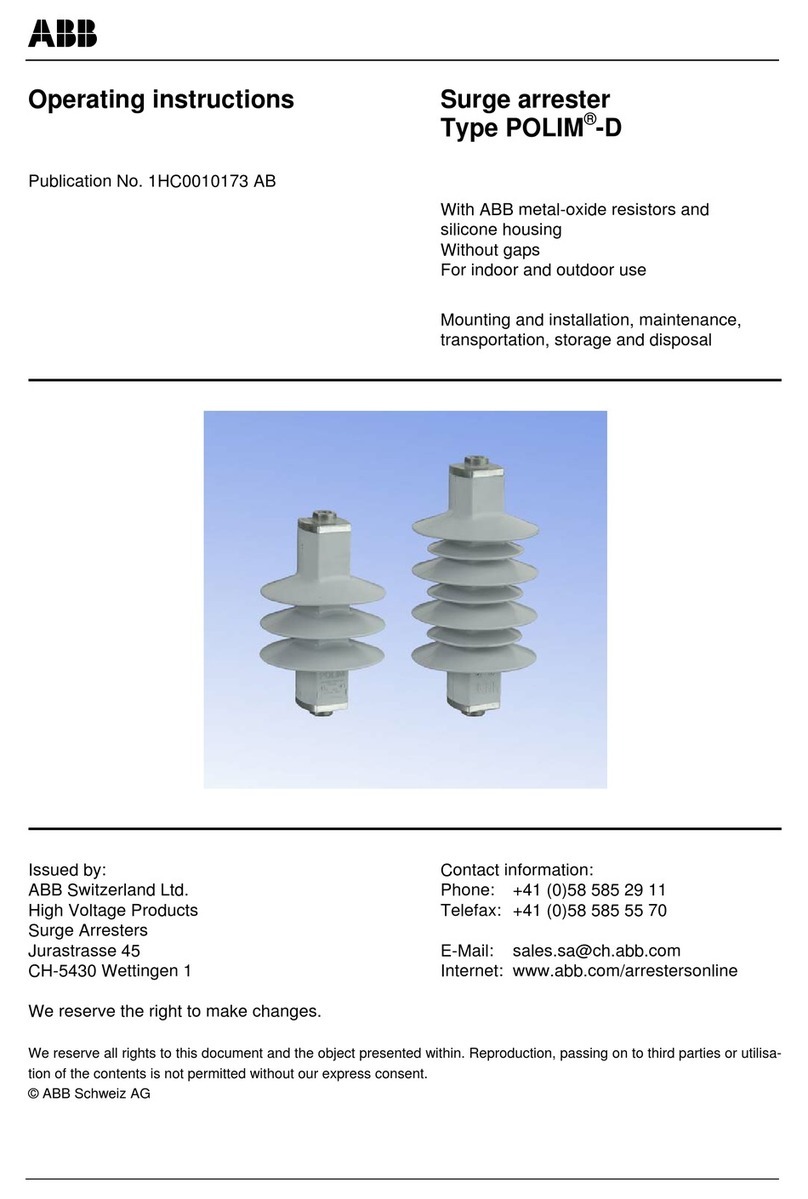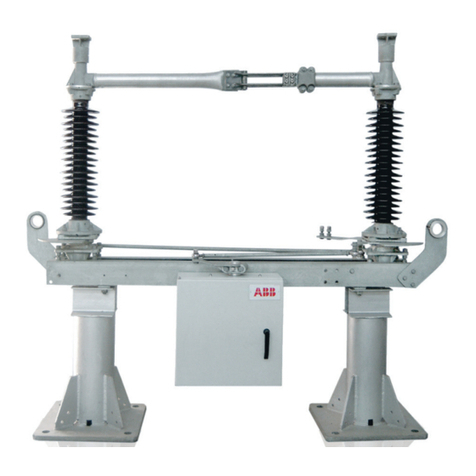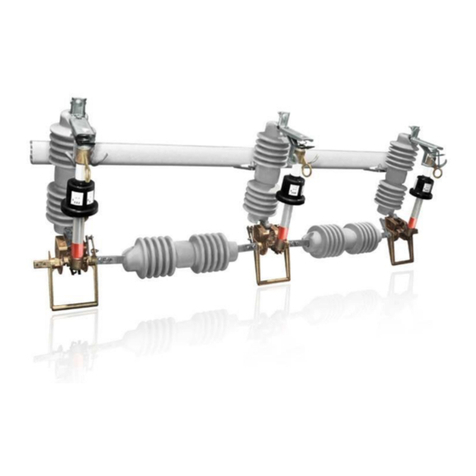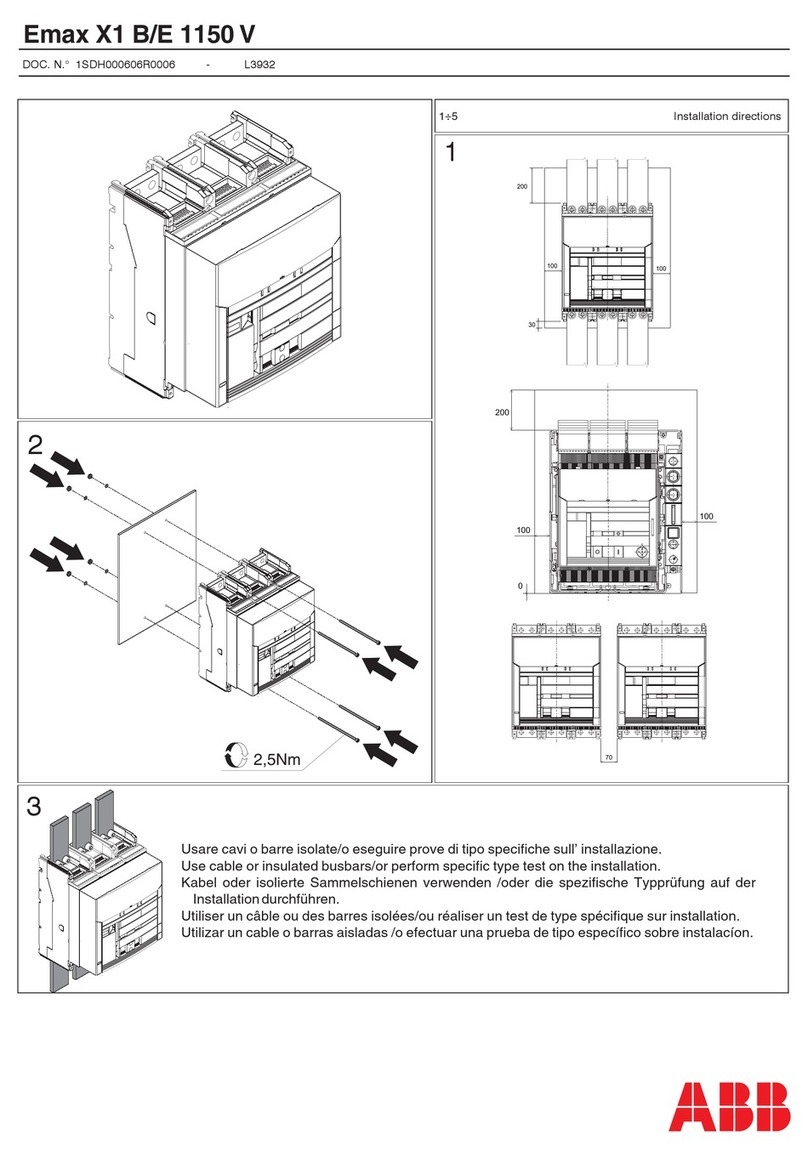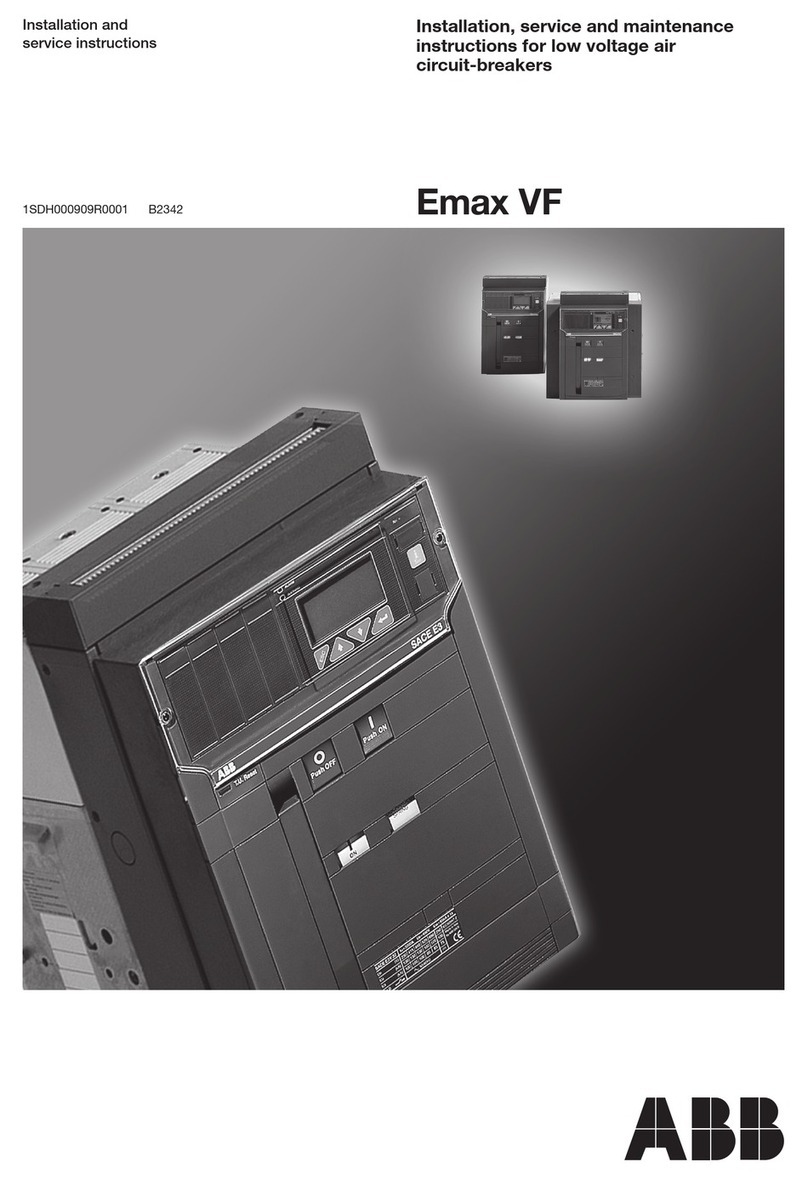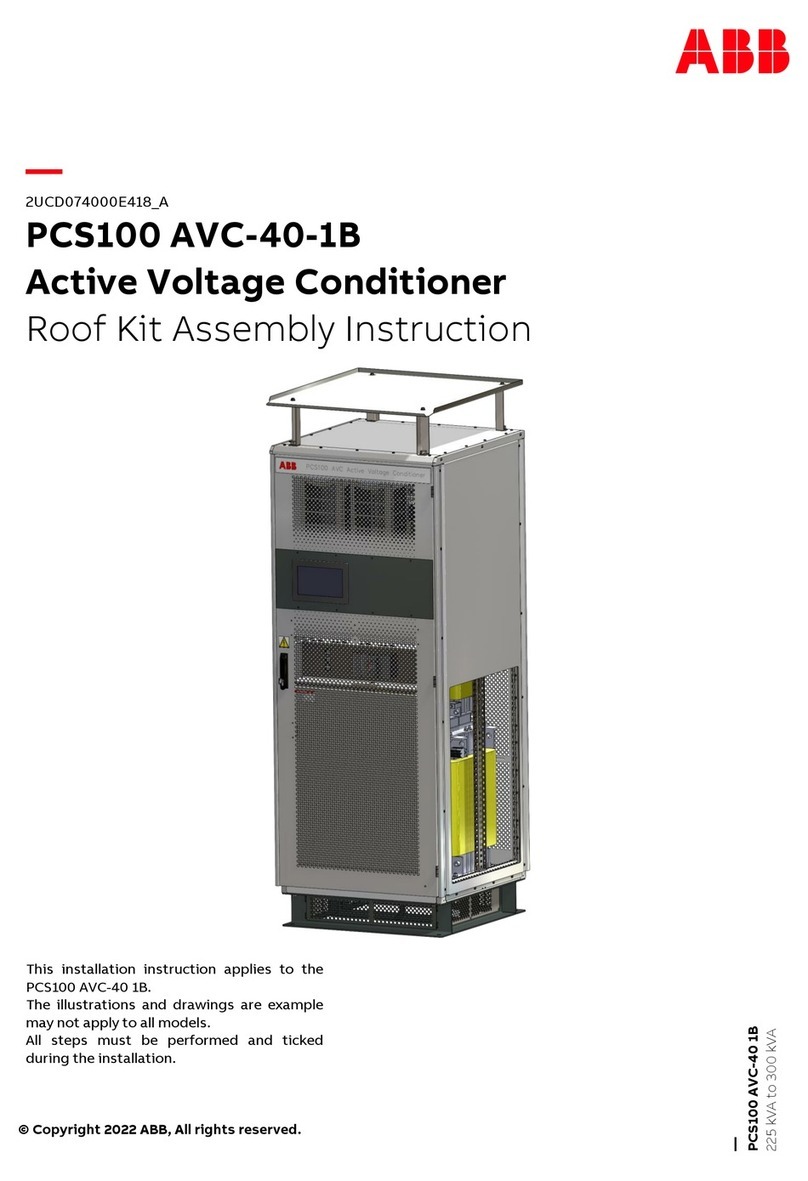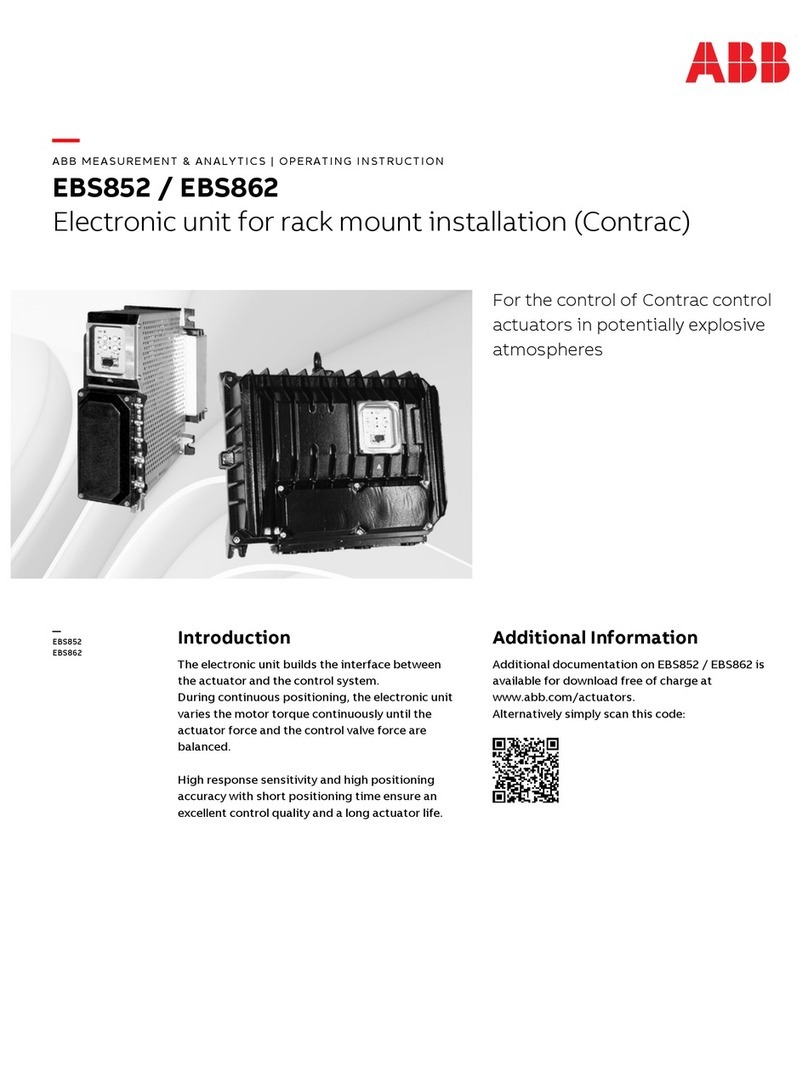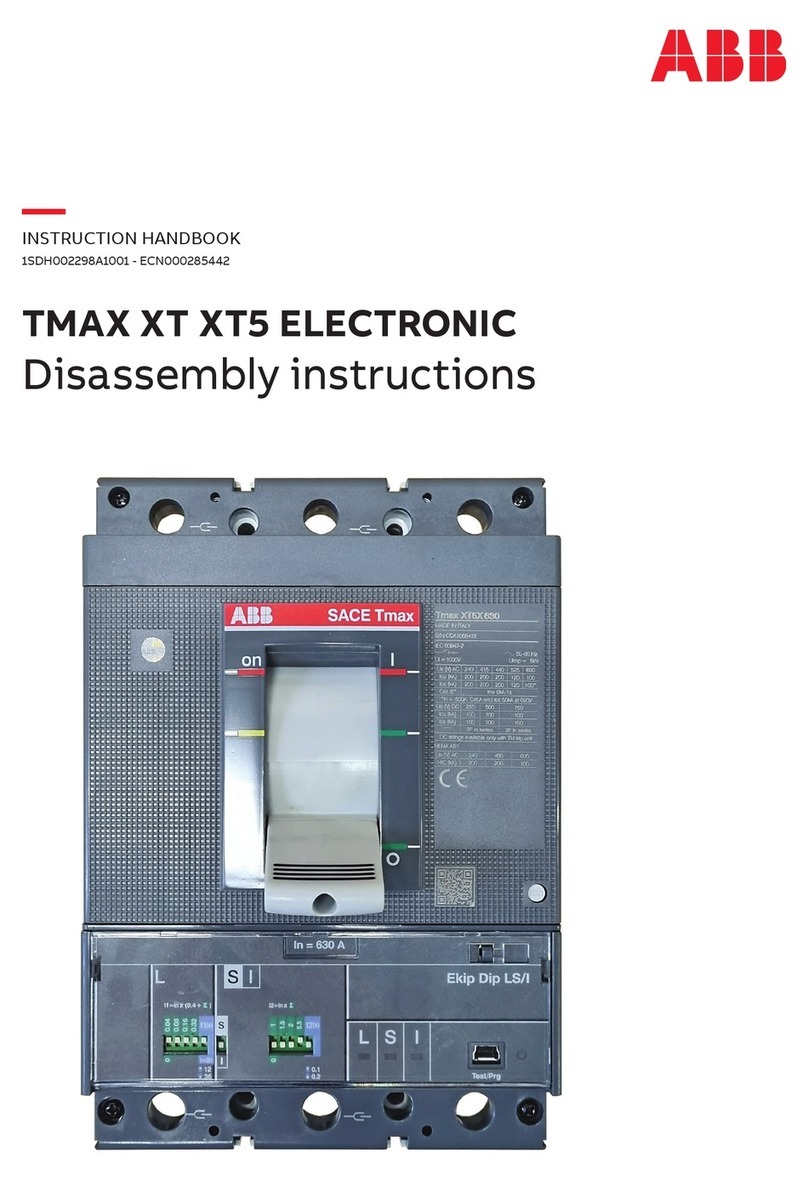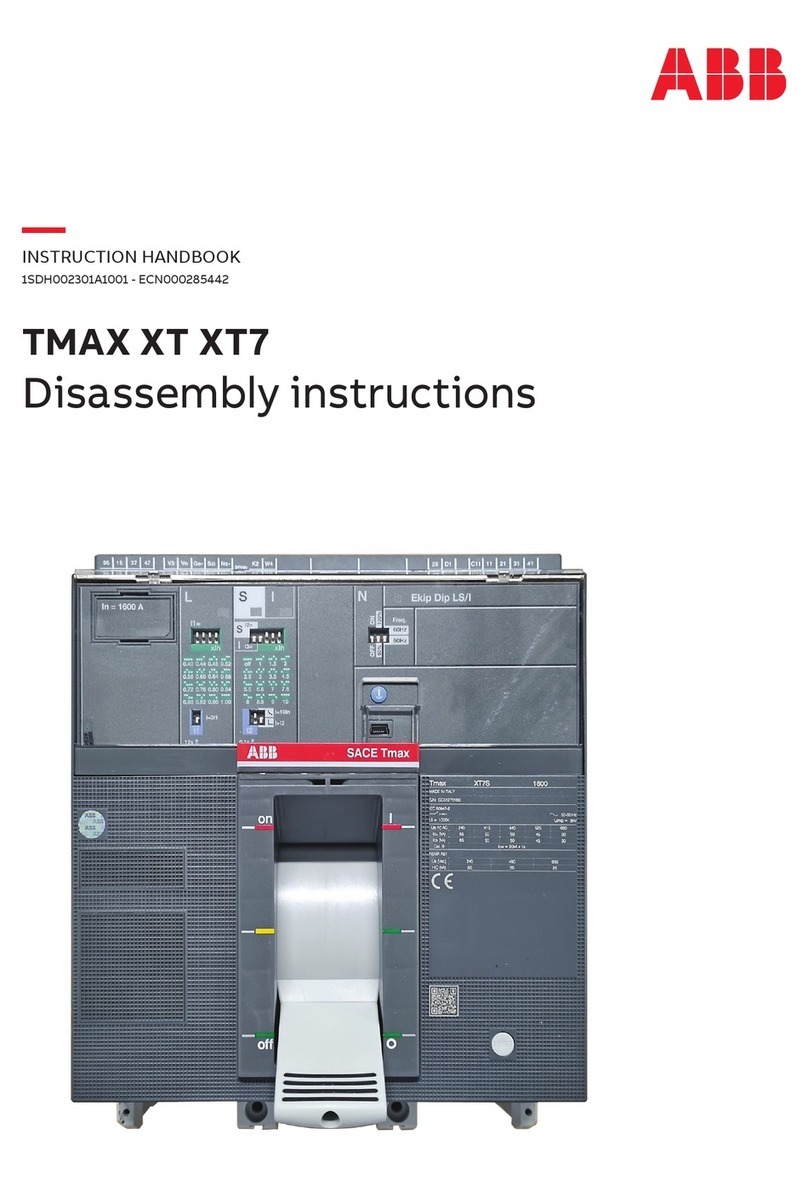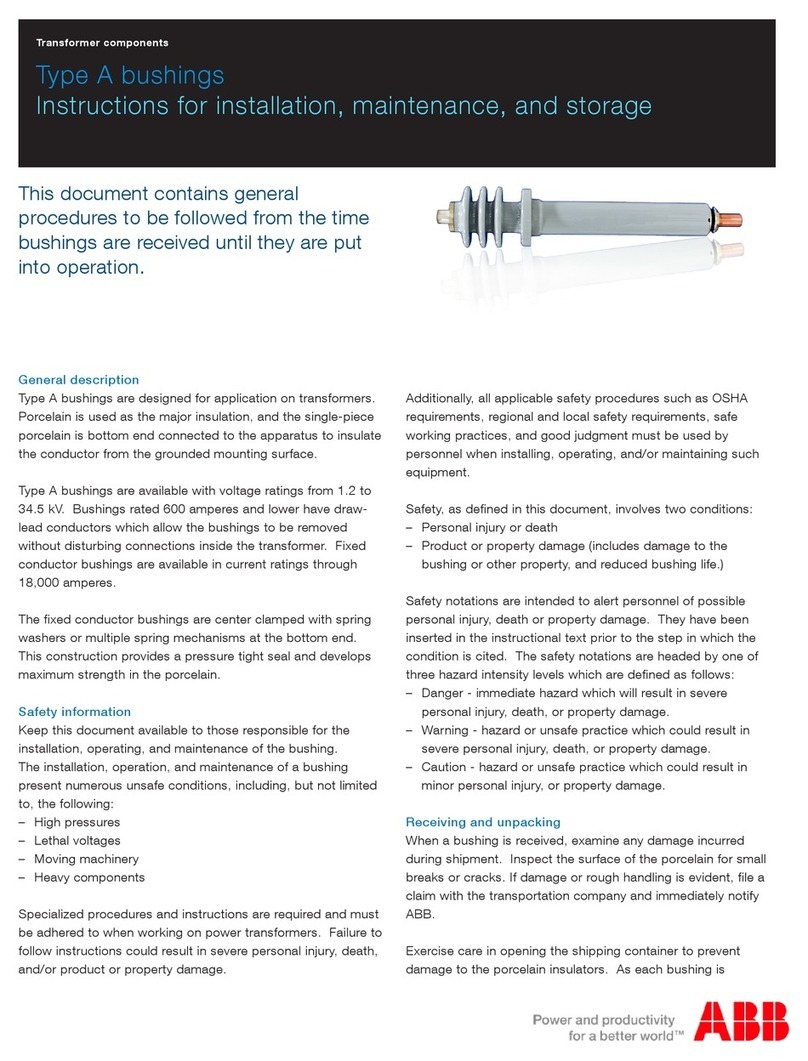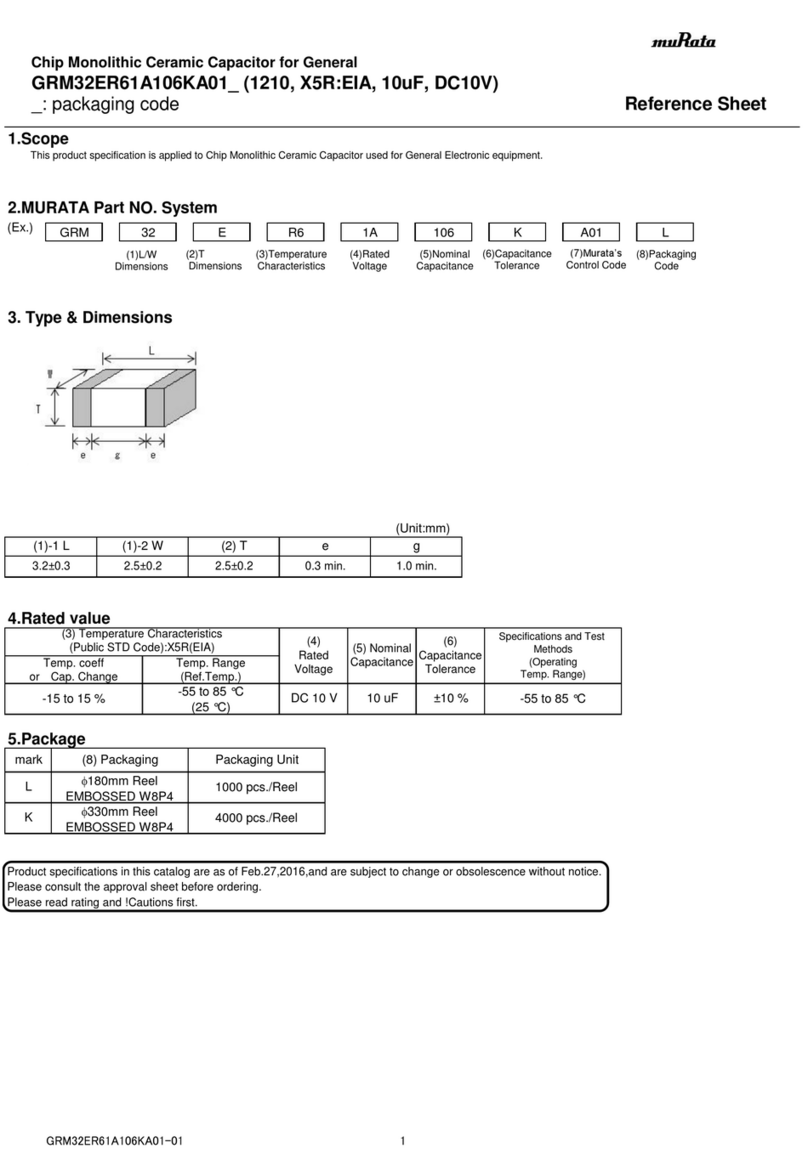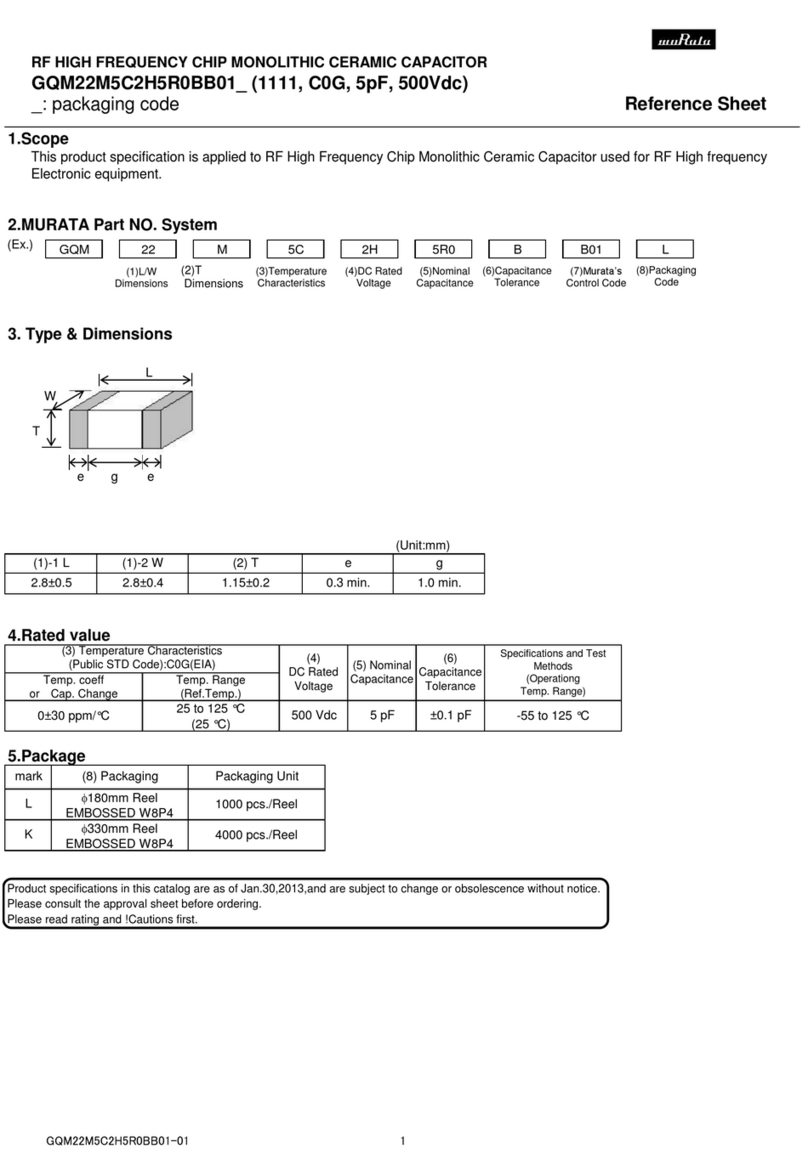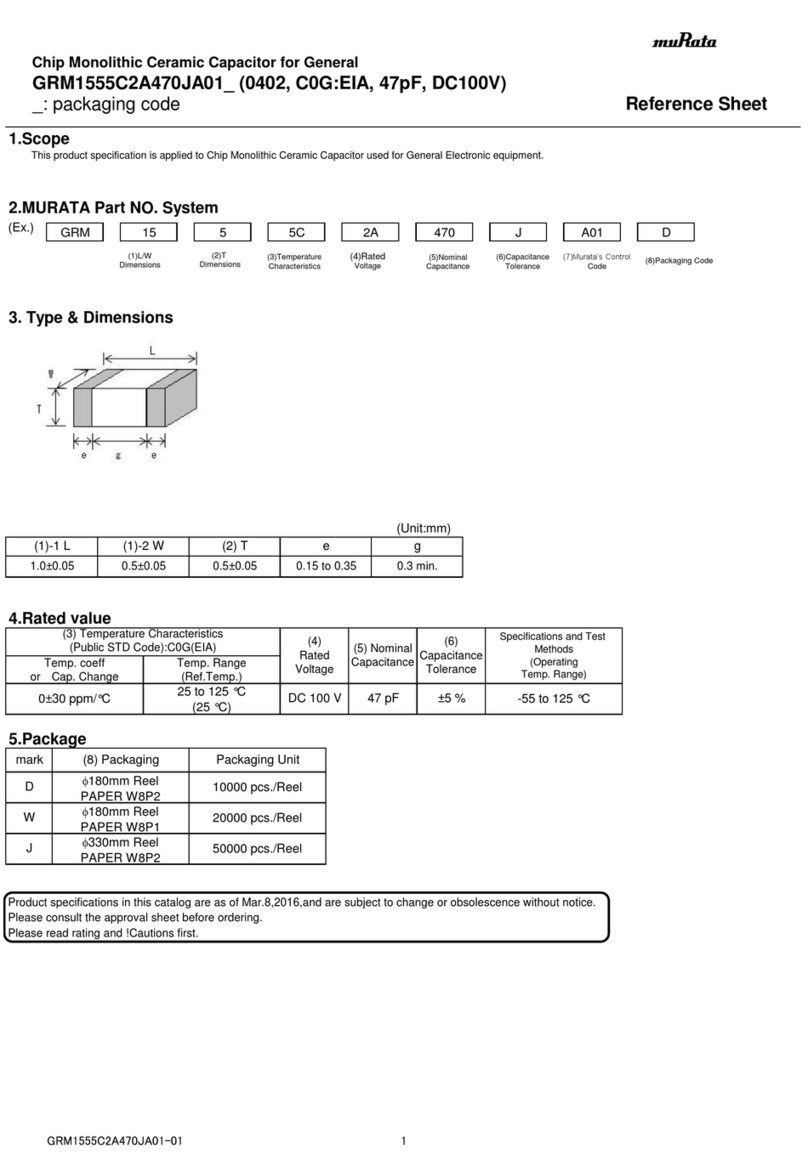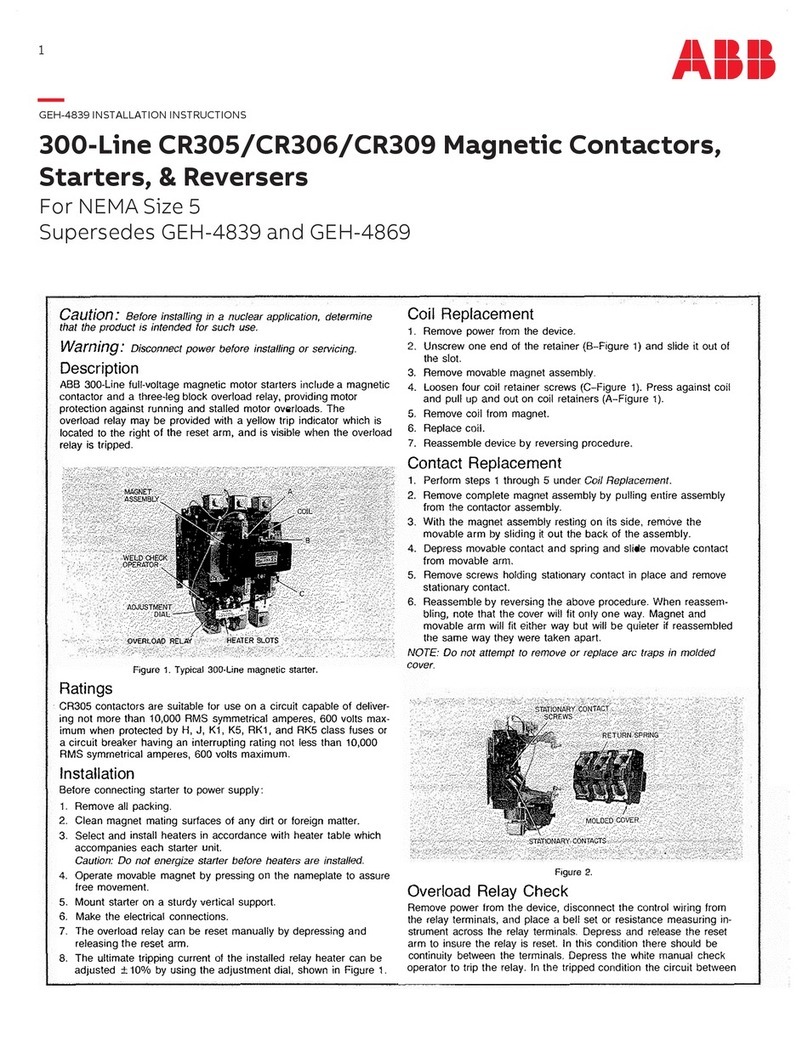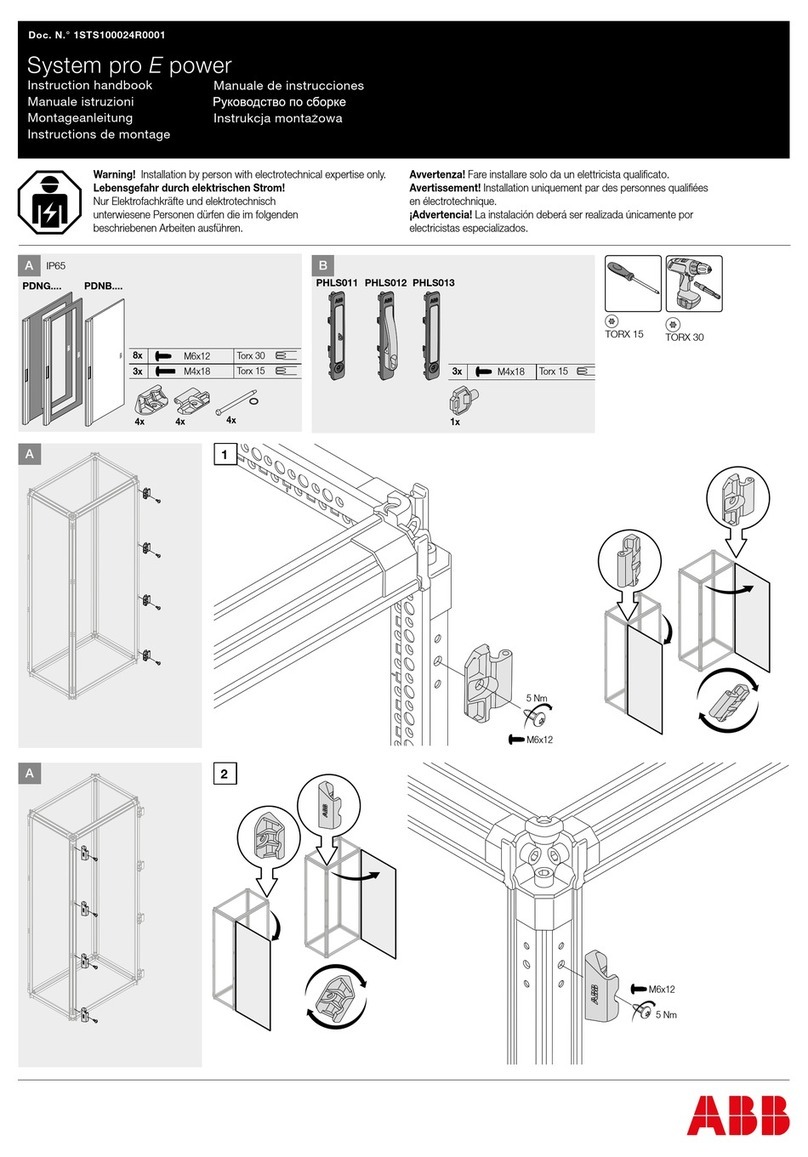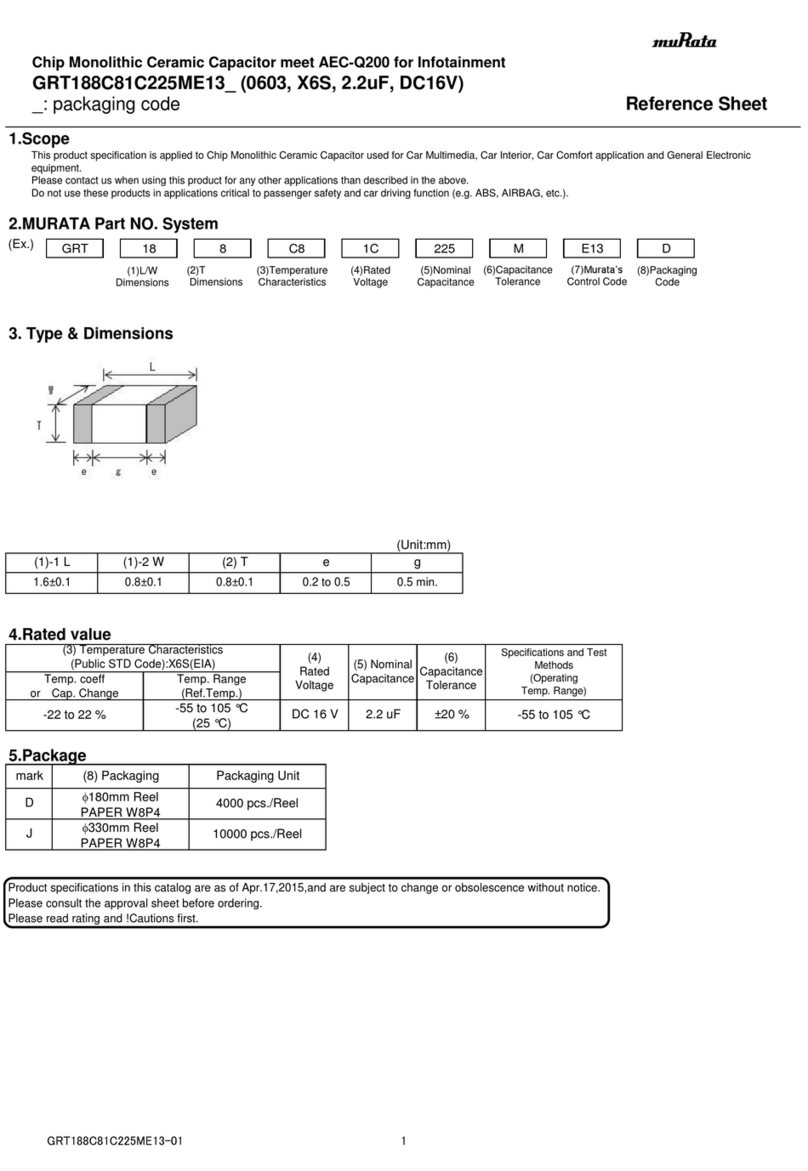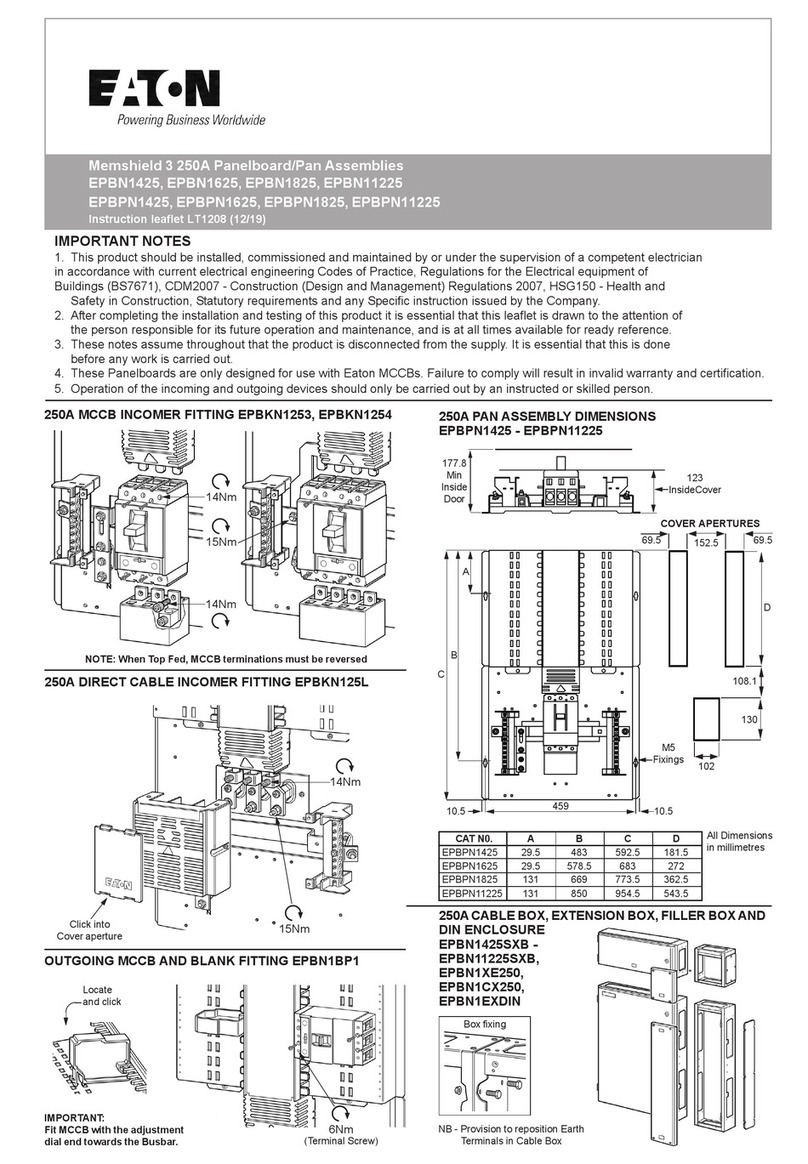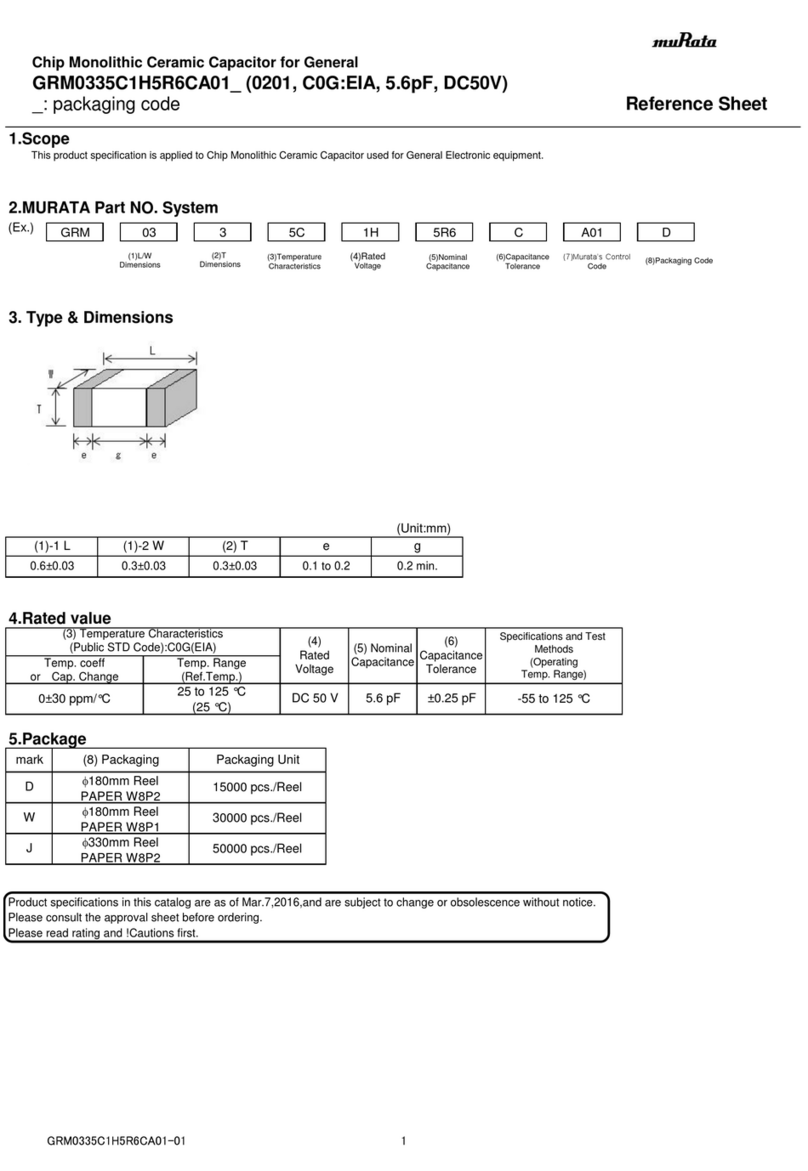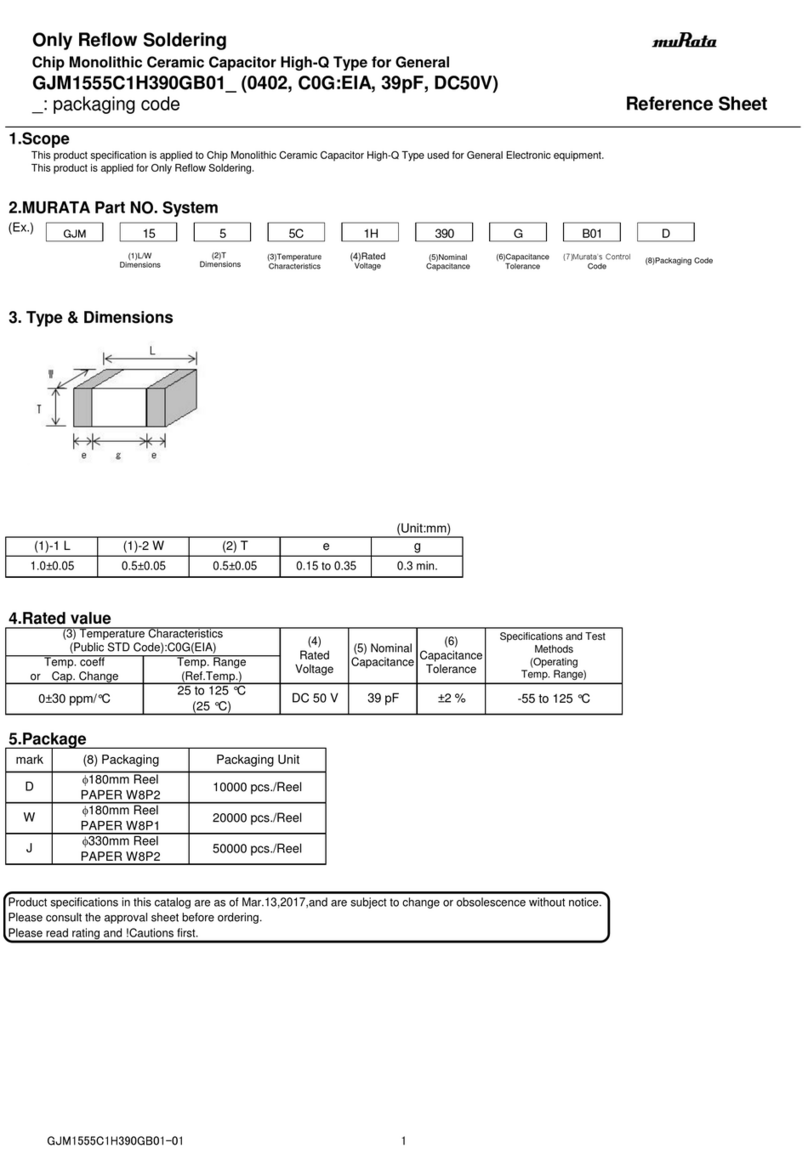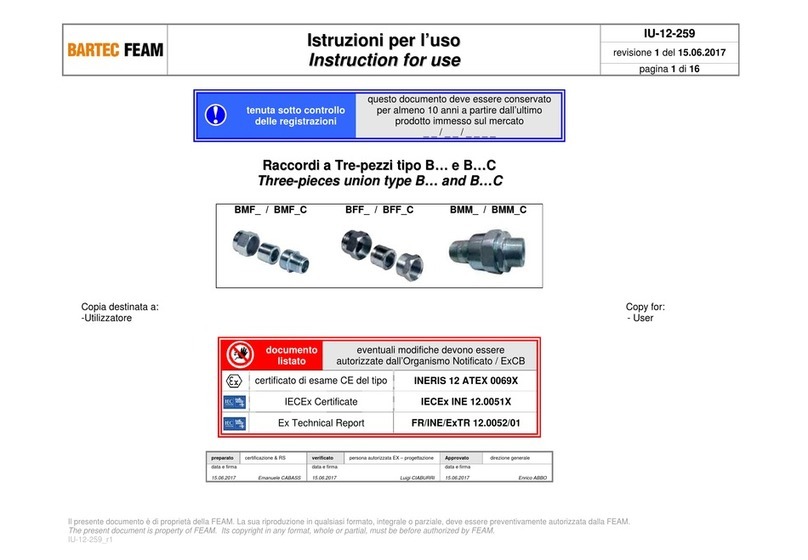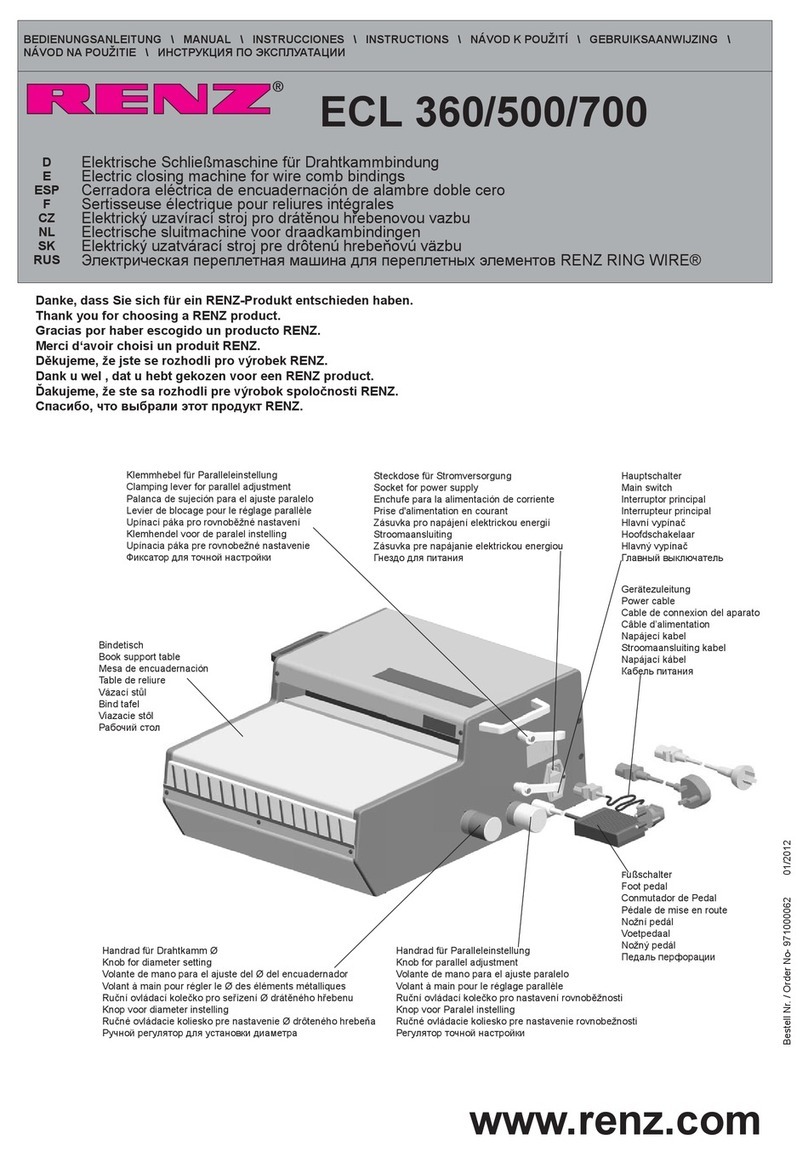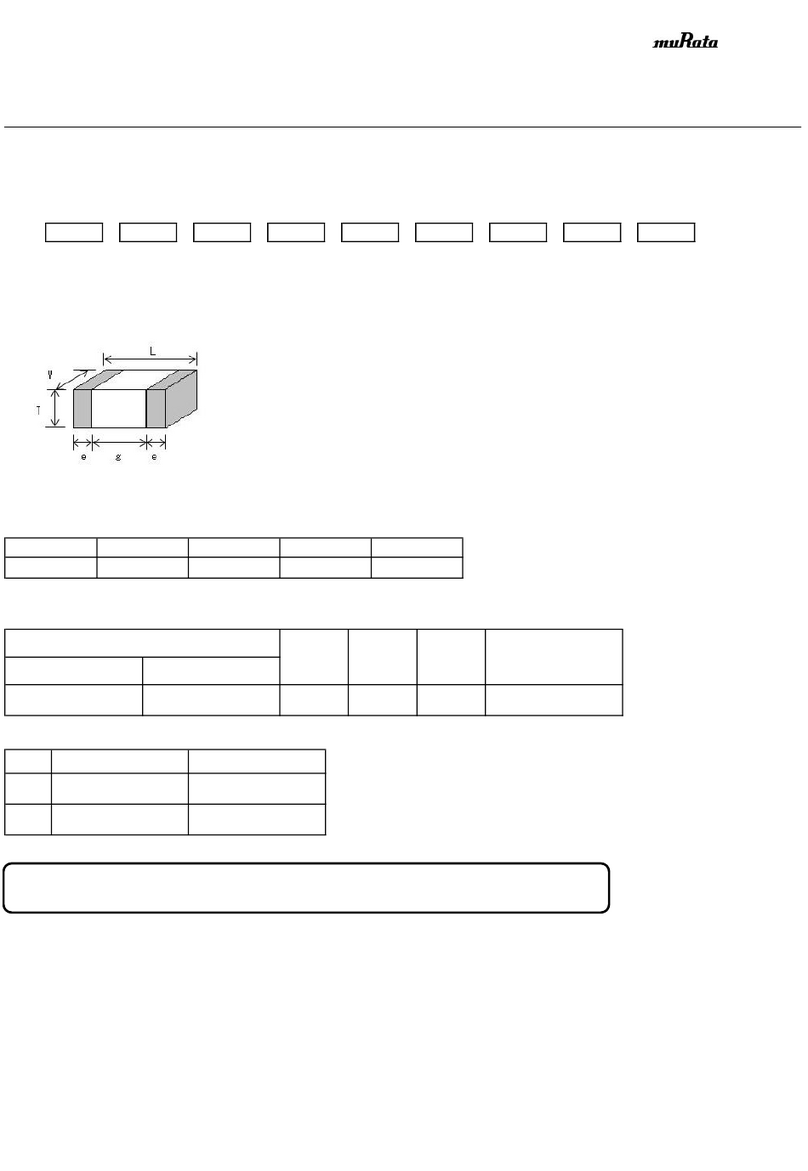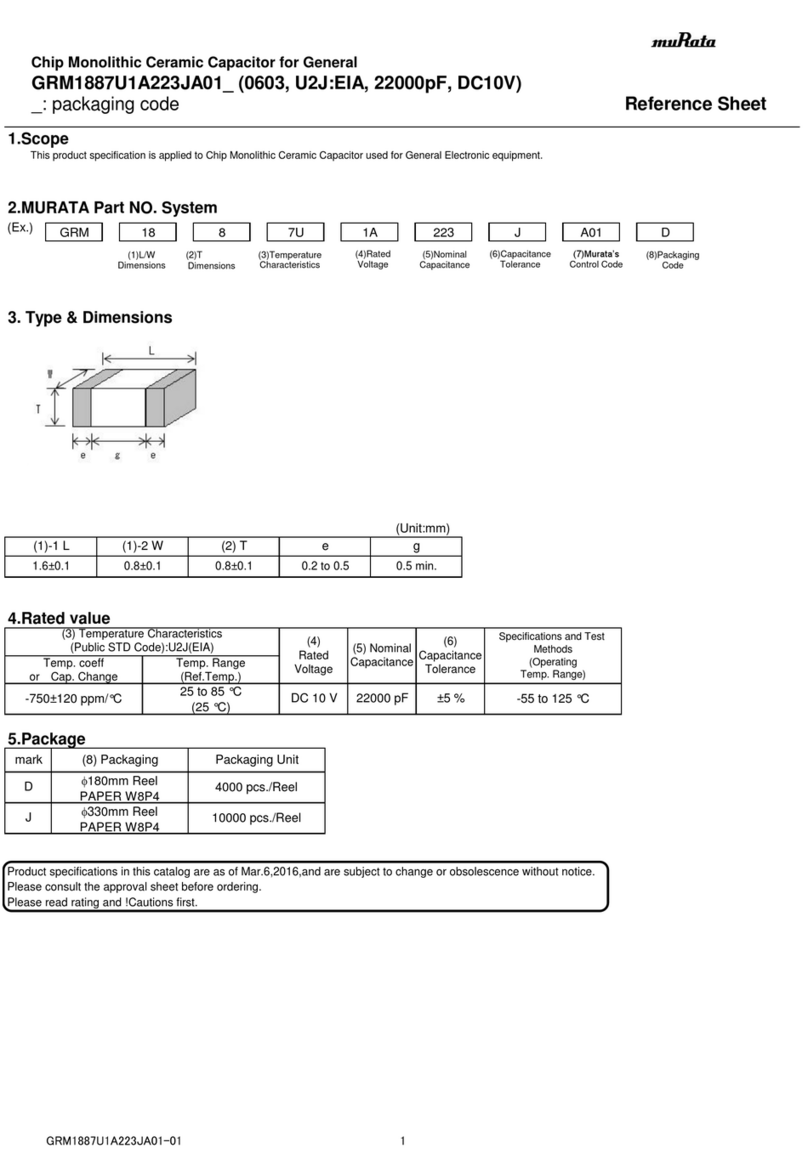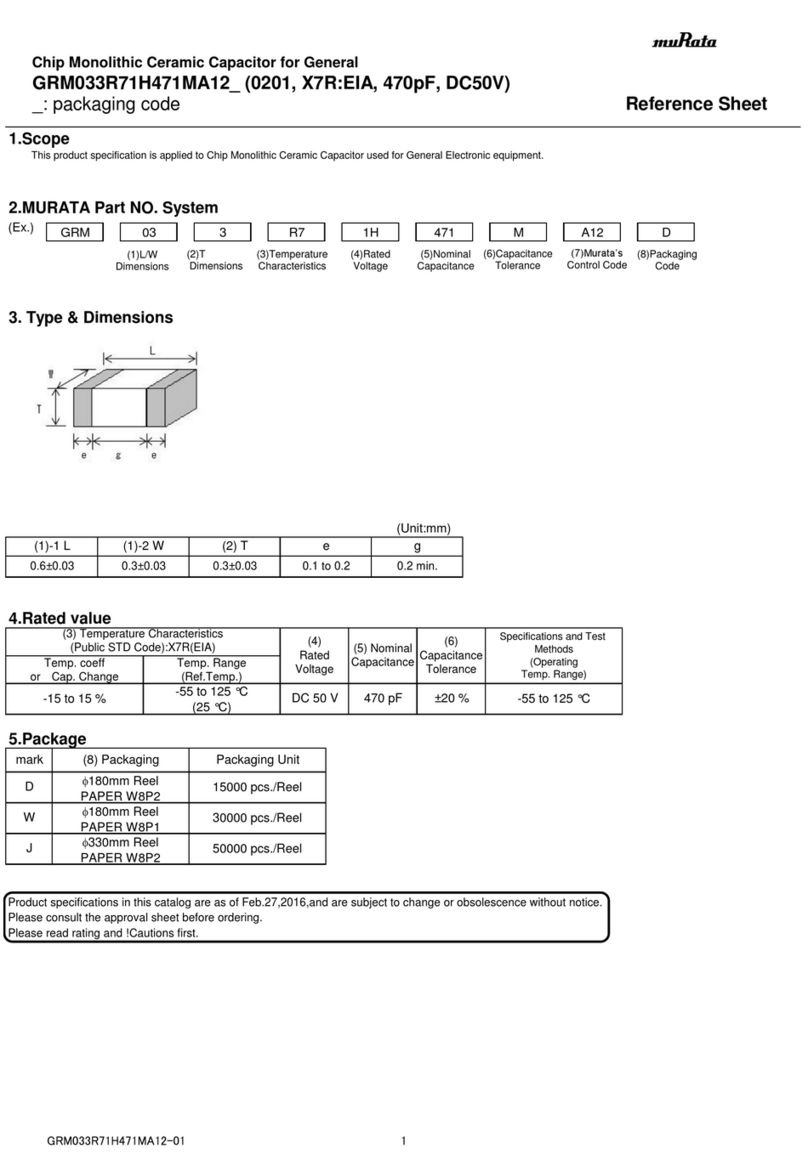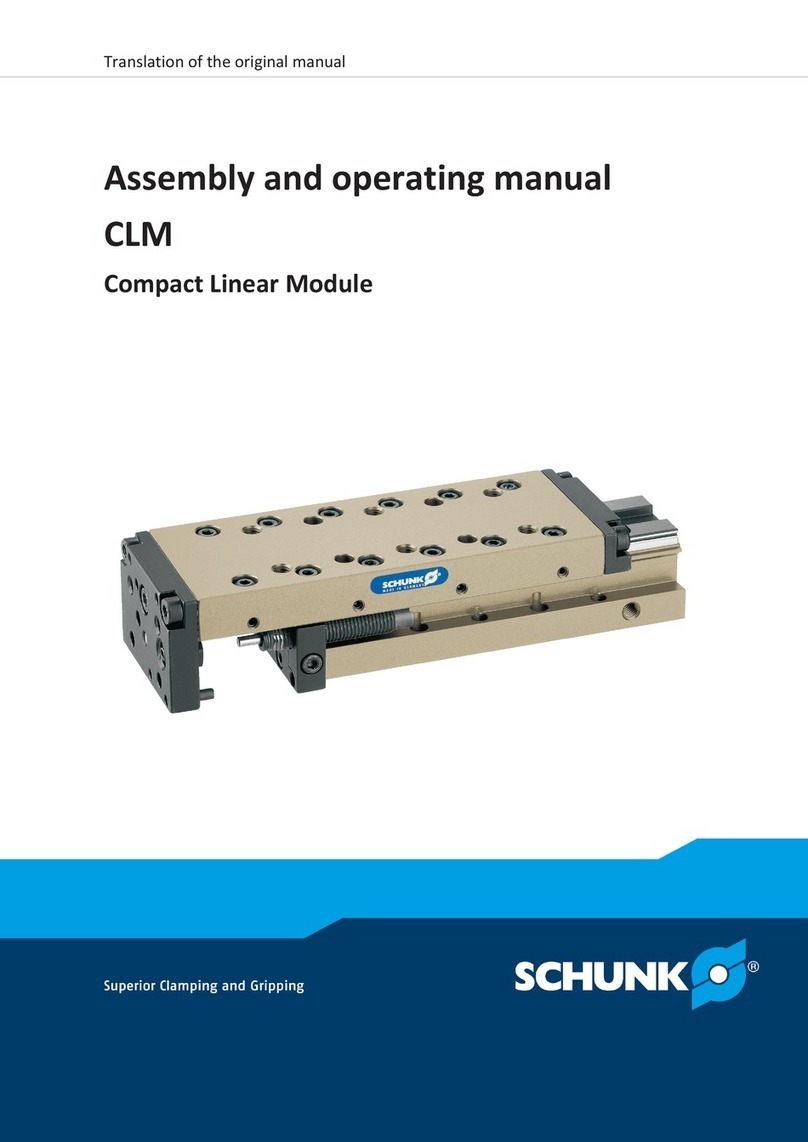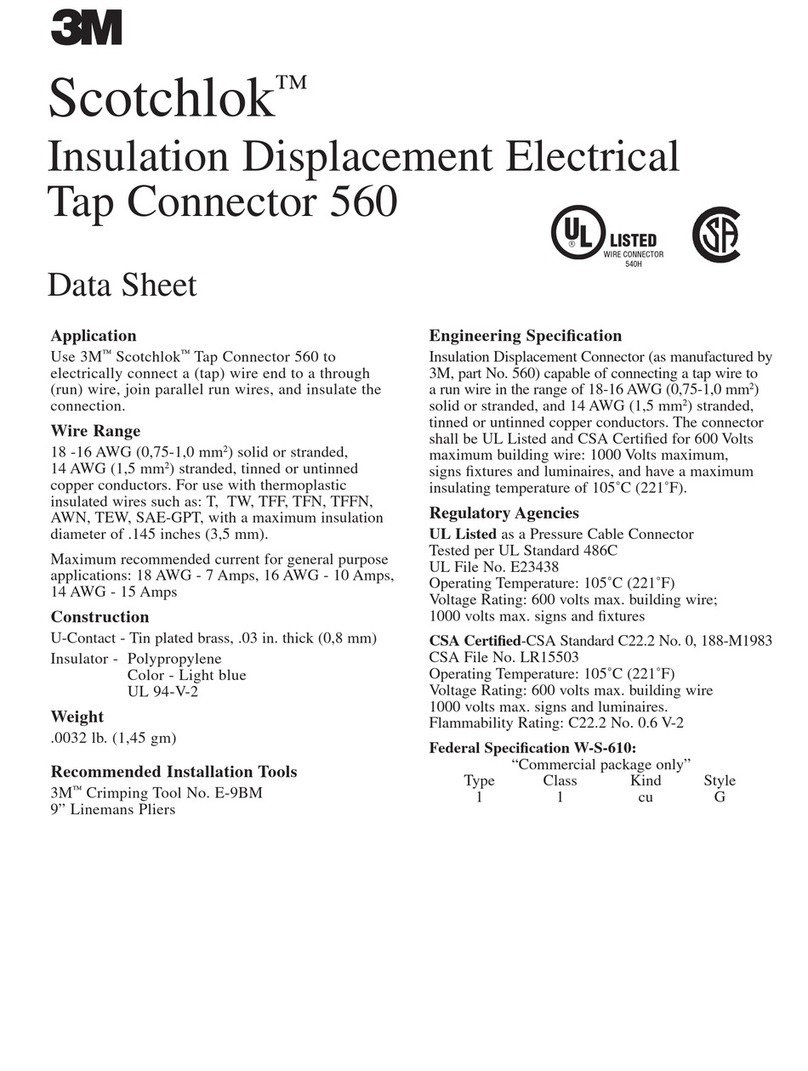
MEDIUM VOLTAGE SERVICES 11
—
6. Installation
Connection to the IED
The sensor cable is terminated by shielded RJ-45
plug connector that shall be connected to the inputs
of the IED. A label identifies each phase connector,
the names -XDB 411, -XDB 412, -XDB 413 are used for
L1, L2, L3 phases respectively.
The sensor plug connector pin’s assignment is
shown below (front view):
Sensor wires are connected according to the
following assignment:
Rogowski sensor:
4 - Coil start
5 - Coil end
Voltage sensor:
7 - Cap. electrode
8 - Ground
This secondary cable is a special shielded cable
designed to give maximum EMI shielding. The cable
shall be connected directly (or via a connector
adapter if needed) to Intelligent Electronic Device
(e.g. protection relay). The electrical shielding of
cable is connected to connector shielding and shall
be earthed on IED side. The cable cannot be moved
if the temperature is below 0 °C. If cable, connector
or connector grommet is damaged please contact
the manufacturer for instructions.
Note for retrofit applications:
It is recommended to use a cable tie to fasten long
sensor cables approximately 10 cm from the RJ-45
socket. A cable not connected to the IED can be left
open or short-circuited without any harm for the
sensor. Even during a primary short-circuit the
voltage in the secondary circuit of the current
sensor will be below 100 V. Nevertheless it is a good
safety practice to earth cables not connected to the
IED.RJ-45 plug connector has 8 contacts and locking
latch coupling. The sensor connector plug shall be
inserted properly with the IED matting receptacle
before completing the coupling with the bayonet
lock. Take care and do not use excessive force to
plug-in and plug-out these connectors.The used RJ-
45-type connectors (EIA/TIA 568A Standard) are
screened and designed to guarantee low resistance
shielding; they are particularly adapted to
applications where electromagnetic compatibility
(EMC) is important. The connectors are robust but it
is necessary to be careful during their assembly – do
not use force.
Instructions for use
Rated parameters
Because the sensors are highly linear within a very
wide range of currents and voltages, the same
single sensor can be used for the various rated
currents and voltages associated with each specific
application. There is no need to specify other
parameters such as burden, safety factor etc. since
they are standard over the defined range. To achieve
the correct function of the protection and control
IED, the selected rated current, as well as the rated
transformation ratio, must be programmed into it.
DANGER
THE SENSORS ARE USED:
• To convert large currents and voltages in the
primary circuit of the network to the
appropriate signal for the secondary
equipment (e.g. IEDs)
• To insulate primary and secondary circuits
from each other
• To protect secondary equipments from
harmful effects or large currents during
abnormal situations in the network
THE USE OF A SENSOR FOR OTHER PURPOSES
THAN THOSE DESCRIBED ABOVE IS
FORBIDDEN.






















